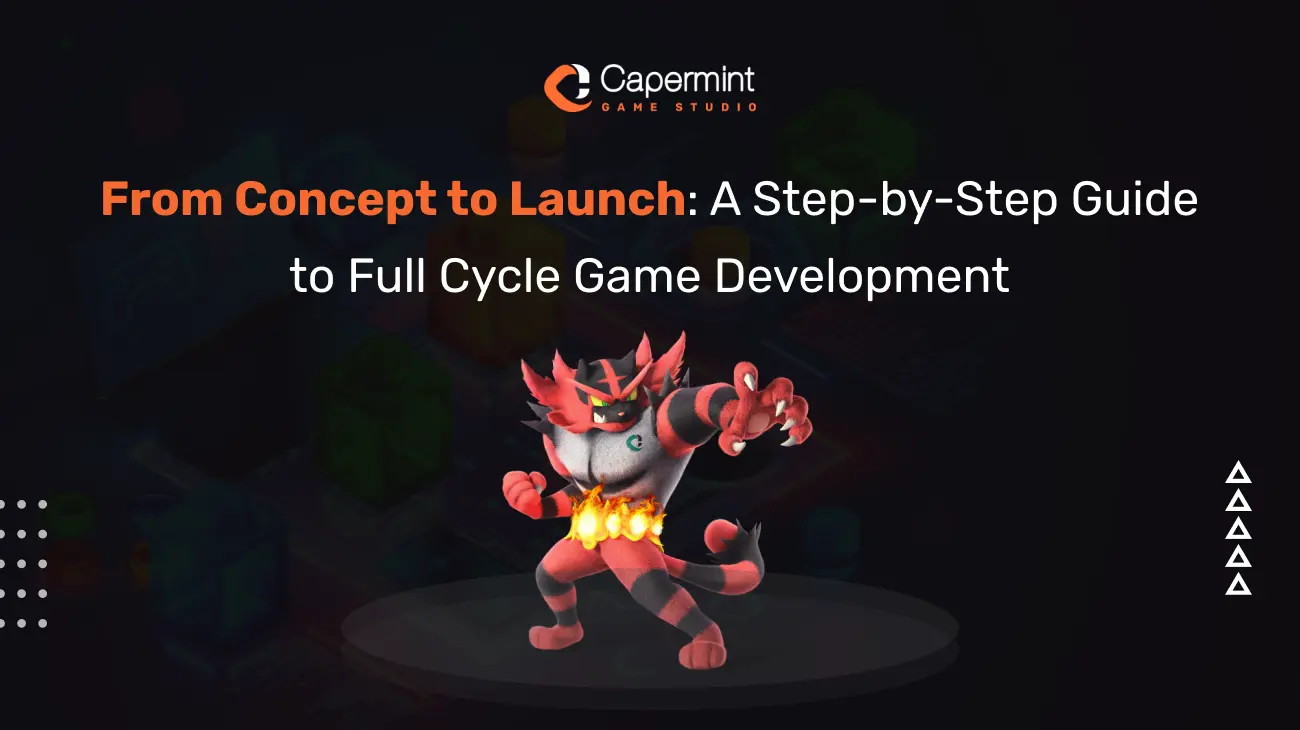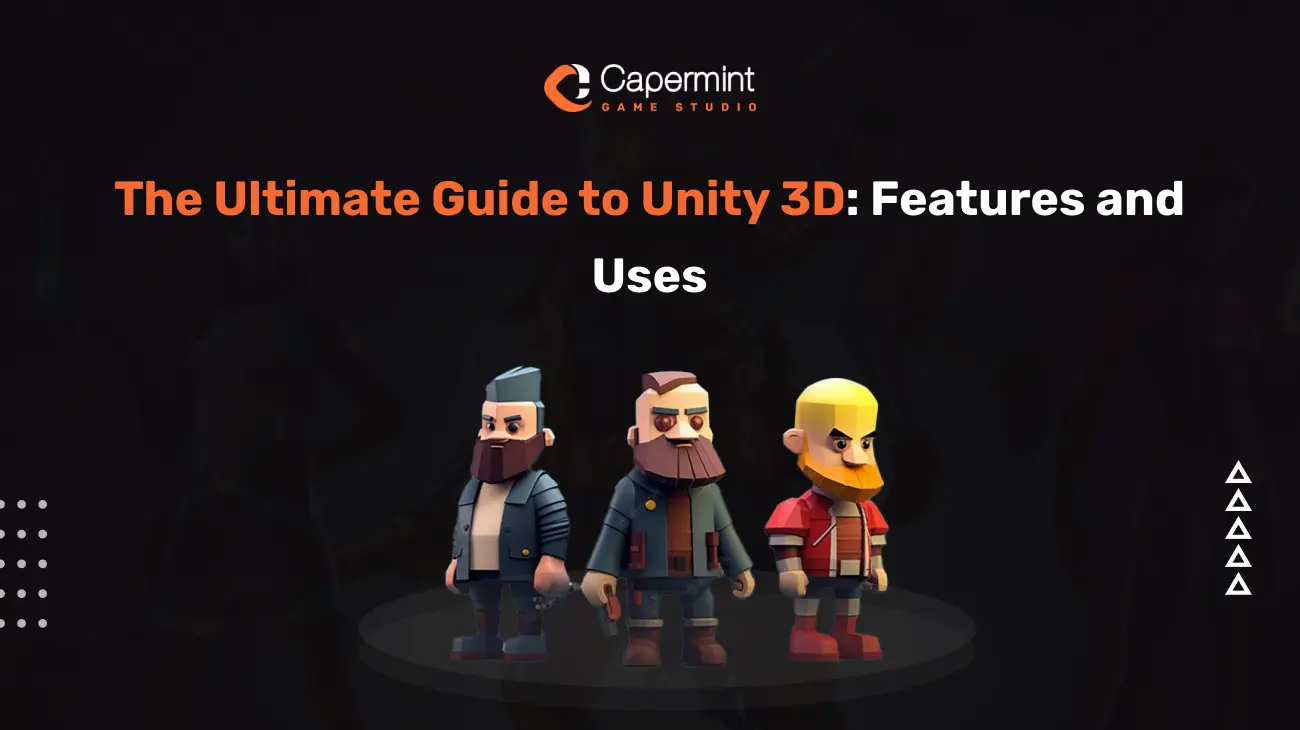
From Concept to Launch: A Step-by-step Guide to Full Cycle Game Development
What is full-cycle game development?
In the ever-evolving world of video game development, bringing a concept to life and transforming it into a successful game requires meticulous planning and skillful execution. In this comprehensive guide, we’ll take you through each stage of this exhilarating journey, from the initial spark of an idea to the thrilling launch day and beyond. Get ready to embark on this exciting adventure of full-cycle game development, and discover why it holds significance for game developers at every level of expertise.
What are the stages of full-cycle game development?
The Pre-Production Phase
Before you even begin to write a single line of code, it’s crucial to establish a rock-solid foundation. This phase involves several critical steps, including:
Defining Your Game Concept: Start by clearly defining your game’s core concept. What’s the unique selling point? What makes it stand out in the crowded gaming market?
Market Research: Investigate the gaming landscape to identify trends, potential competitors, and gaps in the market. Understanding your audience is key.
Creating a Game Design Document: This document acts as your project’s roadmap, outlining game mechanics, characters, levels, and more. It’s your blueprint for success.
Assembling Your Dream Team: Building the right team is crucial. Find individuals who are passionate about your project and bring a diverse range of skills to the table.
Prototyping and Concept Art
The artistic and creative heart of your game lies in:
Prototyping: Create a functional prototype of your game to test its core mechanics and gameplay. This early stage allows you to identify and address potential issues.
Concept Art: Visualize your game’s world through concept art. This not only helps shape the game’s aesthetics and atmosphere but also serves as a reference for the entire team.
The Production Phase
This phase breathes life into your game, and it involves a myriad of tasks, including:
Choosing the Right Game Engine: Select a game engine that suits your project’s needs. Popular options include Unity and Unreal Engine.
Coding and Development: Write clean, efficient code, design game assets, craft levels, and compose music. This is where your game starts to take shape.
Quality Assurance (QA) and Testing: Quality is non-negotiable. Implement rigorous testing phases such as Alpha, Beta, and Playtesting to identify and fix issues.
Iteration and Feedback: Player feedback is gold. Continuously gather and analyze feedback to make iterative changes that enhance your game’s appeal and engagement.
Case Studies
Learn from the successes and failures of industry veterans. Dive into real-world examples to gain insights that can shape your development journey.
1. Kevuru Games
Overview:
The case study focuses on Kevuru Games, a game development company that specializes in full-cycle game development. They showcase their expertise in creating a successful game titled “MechaChain.” This project exemplifies their end-to-end development capabilities, starting from concept and design to testing and release.
Key Takeaways:
Comprehensive Game Development: Kevuru Games demonstrates their proficiency in full-cycle game development, handling all aspects of the MechaChain project, from initial concept and design to animation, testing, and UI/UX. This full-stack approach ensures cohesive and high-quality results.
Innovative Gameplay Mechanics: MechaChain introduces innovative gameplay mechanics by integrating blockchain technology and NFTs into the gaming experience. This forward-thinking approach allows players to assemble combat robots with NFT parts, creating a unique play-to-earn ecosystem within the game.
Strategic Adaptability: The company showcases strategic adaptability by focusing on a mobile-first approach, recognizing the mobile gaming market’s potential. Additionally, their plan to adapt MechaChain for virtual reality headsets reveals their commitment to staying ahead of industry trends and expanding the game’s reach to various platforms.
In conclusion, Kevuru Games’ case study of the MechaChain project illustrates their capabilities in full-cycle game development, the incorporation of innovative gameplay mechanics, and their strategic adaptability in catering to evolving gaming trends.
2. Binamon
Overview:
This case study revolves around the development of Binamon, a player-versus-player (PvP) multiplayer online battle arena (MOBA) game with a unique focus on ranged combat and NFT integration. The game stands out by deviating from traditional MOBA mechanics, omitting lanes and minions, and instead emphasizing battles between creatures and monsters. Developed by the Starloop team, this project required full-cycle development, including game design, programming, 3D art production, and UI/UX. The integration of NFTs is a core feature, allowing players to import their NFTs from Binamon collections and collect new creatures within the game.
Key Takeaways:
Adaptive Game Design: The case study highlights the importance of adaptability in game development. Initially designed with melee combat mechanics, the team at Starloop recognized the need for a change and successfully transitioned to ranged combat based on feedback from playtesters and the QA team. This flexibility in adapting game mechanics contributed to a better player experience.
NFT Integration: Binamon’s integration of blockchain technology and NFTs represents a growing trend in the gaming industry. This approach not only provides players with unique collectibles but also creates a sense of ownership and value within the game. The ability to import NFTs from other collections and incorporate them into Binamon showcases the potential for interoperability in blockchain-based games.
Community-Centric Development: The case study underscores the significance of community feedback in shaping the game’s direction. Regular updates and quick turnarounds were necessary due to the enthusiastic community’s desire for new features and versions. The positive feedback received from both the client and the player community indicates the success of this community-centric approach to development.
In summary, the Binamon case study demonstrates the importance of adaptability in game design, the potential of NFT integration in gaming, and the value of involving the player community in shaping the game’s development and direction.
Frequently Asked Questions
As you delve into the world of game development, you’re likely to encounter some common questions and challenges along the way. Here are a few frequently asked questions and their brief answers:
What are the essential skills needed for game development?
Game development requires a diverse skill set, including programming, art and design, sound/music composition, and project management. Critical thinking, problem-solving, and creativity are also invaluable.
How do I protect my game’s intellectual property?
Intellectual property protection involves copyrighting, trademarking, and potentially patenting aspects of your game. Consult with legal experts specializing in IP to safeguard your creation.
What marketing mistakes should I avoid during launch?
Common marketing mistakes include inadequate planning, ignoring your target audience, overspending on marketing, and failing to build a pre-launch buzz. This guide covers effective marketing strategies.
How do I deal with negative player feedback?
Negative feedback is inevitable. Respond professionally, analyze the feedback for constructive criticism, and use it to improve your game. Engaging with your community can also help mitigate negative comments.
What tools and software are essential for game development?
Essential tools and software include game engines (e.g., Unity, Unreal Engine), design software (e.g., Photoshop, Blender), version control (e.g., Git), and project management tools (e.g., Trello, Jira). The choice depends on your project’s needs and your team’s preferences.


